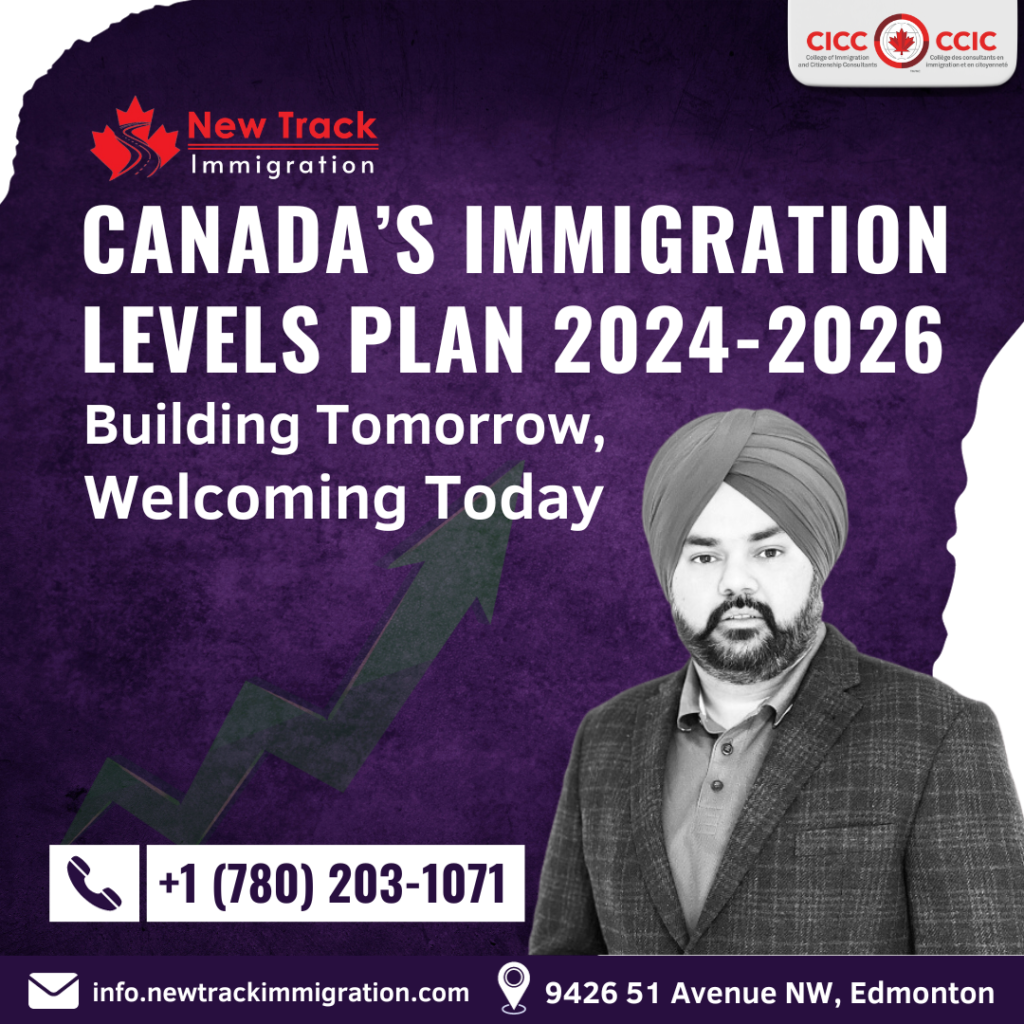Canada’s Immigration Levels Plan 2024-2026 impact on Housing & Healthcare: On the 1st of November, Immigration Refugees and Citizenship Canada (IRCC) unveiled its ambitious Immigration Levels Plan for 2024-2026, setting the stage for the next three years of Canada’s immigration landscape.
Embark on a journey through Canada’s visionary Immigration Levels Plan 2024-2026, where the focus is not just on numbers but on people and their well-being. This plan, akin to a roadmap for a thriving future, not only addresses housing and healthcare concerns but also strives to strike a balance, ensuring a warm welcome for newcomers while nurturing the needs of the existing community. Join us in exploring a human-centric approach to Canada’s immigration landscape.
Addressing Concerns & Striking a Balance | Canada’s Immigration Levels Plan

With a focus on stability, the plan aims to admit 485,000 new permanent residents in 2024, followed by an annual intake of 500,000 in both 2025 and 2026. Immigration Minister Marc Miller emphasizes that this approach seeks to address concerns expressed by Canadians, particularly regarding affordability, with housing being a central point of contention.
In response to these worries, the Minister assures that the plan is comprehensive, striving to find equilibrium between supporting Canada’s labor force needs and ensuring the well-being of the existing population. The overarching goal is to grow Canada’s economy while upholding its humanitarian tradition and fostering collaboration in levels planning with various partners.
Bridging Labor Gaps: A Comprehensive Strategy
The recently released Strategic Immigration Program complements the Immigration Levels Plan, underscoring the importance of supporting Canada’s labor force growth. Over 60% of newcomers in the next three years will be from economic class immigration pathways, including Express Entry managed programs, the Provincial Nominee Program, and regional economic immigration programs.
The strategy adopts a “whole of government” approach, involving consultations with stakeholders, government departments, and provincial governments to identify skills gaps and determine the required influx of newcomers. This collaborative effort also serves to assess the level of support available for newcomers upon their arrival.
Building a Sustainable Future: The Role of Skilled Immigrants
Recognizing the need for skilled workers, the IRCC plans to enhance foreign credential recognition and promote awareness of financial assistance programs for newcomers. This initiative aims to attract skilled immigrants who can contribute to sectors vital for Canada’s future, such as healthcare and construction.
Addressing Healthcare & Construction Challenges | Canada’s Immigration Levels Plan
The Immigration Levels Plan aligns with the National Housing Strategy, pledging over $82 billion for the next decade to address housing needs. This infusion of skilled immigrants is crucial for the construction and trades sectors, supporting the strategy’s goal of reducing housing costs.
Concerns about healthcare are also addressed, acknowledging the strains on the system, particularly highlighted during the COVID-19 pandemic. The plan recognizes the need for skilled healthcare professionals to address job vacancies and potential burnout issues.

Category-Based Express Entry: A Targeted Approach
Introduced in May, the Category-Based Express Entry rounds of invitations aim to target candidates with specific attributes essential for fulfilling IRCC mandates. Categories include Healthcare, STEM professions, Trades, Transport, Agriculture and agri-food, and French language proficiency. These targeted draws are strategically designed to address labor force gaps in high-demand sectors.
Deputy Immigration Minister Christiane Fox has confirmed upcoming draws for trades occupations, aligning with the plan’s projection of admitting 110,770 Express Entry candidates in 2024 and 117,500 annually in both 2025 and 2026.
In essence, Canada’s Immigration Levels Plan for 2024-2026 reflects a commitment to a balanced, collaborative, and human-centric approach, ensuring a sustainable future for both newcomers and the existing population. Hope you liked this article on Canada’s Immigration Levels Plan 2024-2026 Housing Healthcare.









